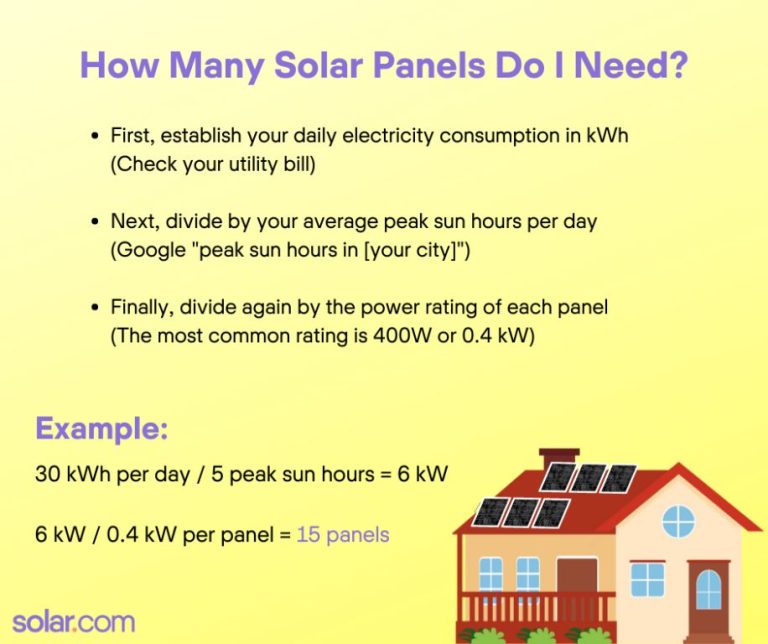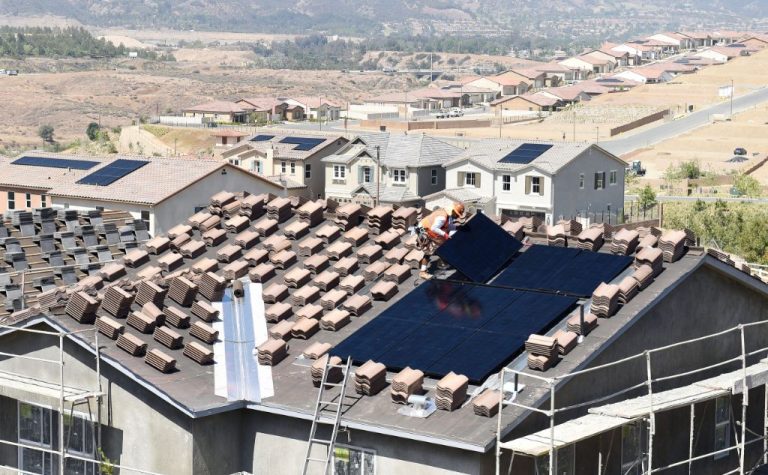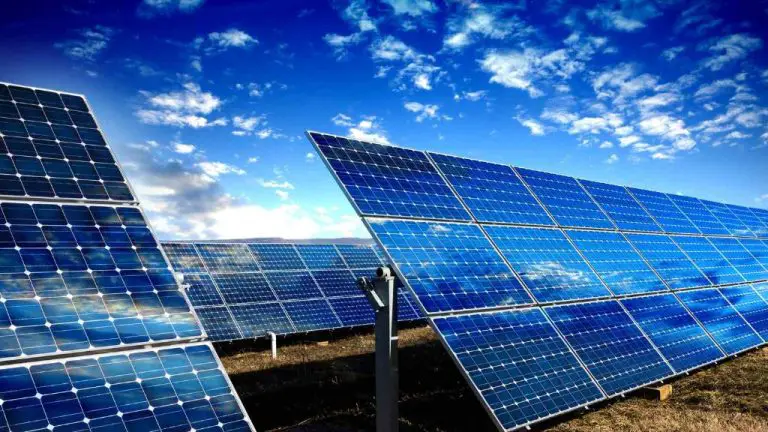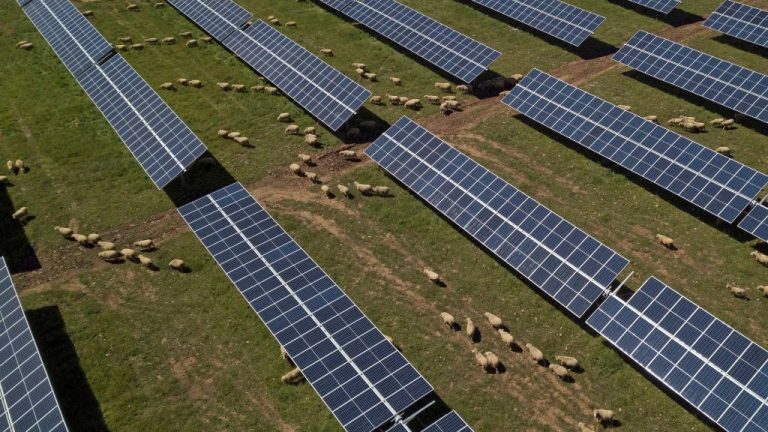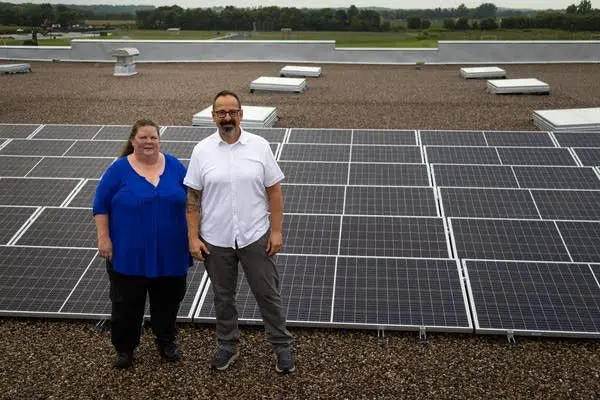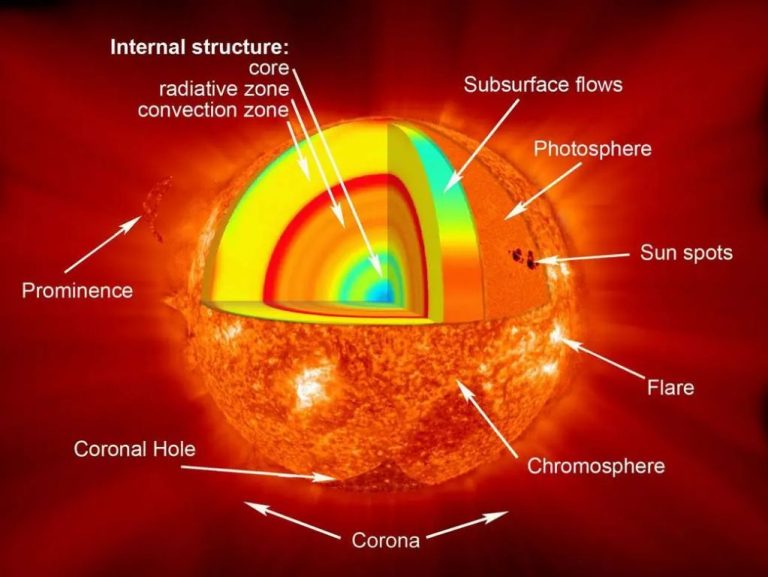What Is It Called When Plants Convert Sunlight Into Energy?
What is Photosynthesis?

Photosynthesis is the process that plants and some microorganisms use to convert sunlight, carbon dioxide, and water into carbohydrates and oxygen. During photosynthesis, plants absorb light energy using chlorophyll. This energy is converted into chemical energy that the plant can use as food. The overall process can be summarized by the following chemical equation:
6CO2 + 6H2O + Light Energy → C6H12O6 + 6O2
This chemical reaction means that carbon dioxide (CO2) and water (H2O) are used to produce glucose (C6H12O6) and oxygen (O2). The glucose acts as an energy source for plants, while the oxygen is released as a waste product. Photosynthesis is essential for life on Earth – it provides the energy that nearly all organisms need to survive.
The Light-Dependent Reactions
The light-dependent reactions are the first stage of photosynthesis, where sunlight is absorbed by chlorophyll in the leaves of plants. This absorbed light energy is converted into chemical energy in the form of ATP and NADPH. There are two key steps in the light-dependent reactions:
Absorption of Light Energy
Chlorophyll, the green pigment in plant leaves and algae, absorbs sunlight mostly in the blue and red regions of the visible light spectrum. It absorbs the energy from these wavelengths and gets “excited”, moving one of its electrons to a higher energy state.
Electron Transport Chain & Chemiosmosis
The excited electron gets passed along a series of proteins called an electron transport chain. As it passes from one protein to the next, energy is released. This energy fuels the production of ATP and NADPH. A proton (H+) gradient is also formed across a membrane through a process called chemiosmosis. This gradient powers the production of additional ATP.
The Calvin Cycle
The Calvin cycle is the second stage of photosynthesis, where carbon fixation occurs. This takes place in the stroma of the chloroplast. The cycle was discovered and named after scientist Melvin Calvin.
During carbon fixation, carbon dioxide from the atmosphere is incorporated into existing organic molecules. This produces a 3-carbon compound called glyceraldehyde-3-phosphate (G3P).
The Calvin cycle has three main phases:
1. Carbon fixation – Carbon dioxide is fixed to a 5-carbon molecule called ribulose-1,5-bisphosphate (RuBP) by an enzyme called Rubisco. This forms unstable 6-carbon compounds that immediately split into two 3-carbon G3P molecules.
2. Reduction – G3P is converted into other 3-carbon compounds like glucose by obtaining electrons. The electrons come from the energy that was produced during the light-dependent reactions.
3. Regeneration of RuBP – To restart the Calvin cycle, RuBP must be regenerated. This happens by using ATP and NADPH from the light-dependent reactions to convert G3P back into RuBP.
The Calvin cycle is able to capture and reduce atmospheric carbon dioxide into organic molecules like G3P through these three main phases. The end result is energy-rich compounds that can be used by the plant or converted into other molecules like glucose.
Where Does Photosynthesis Take Place?
Photosynthesis takes place primarily in the chloroplasts of plant cells. The chloroplasts contain the chlorophyll pigment that absorbs sunlight and uses its energy to fuel the photosynthetic process. Inside the chloroplasts, the proteins and enzymes required for photosynthesis are embedded within stacked disc-shaped structures called thylakoids.
Although chloroplasts are found throughout plants, the majority of photosynthesis takes place in the leaves. The broad, flat shape of most leaves maximizes their exposure to sunlight. In addition, leaves contain many interconnecting air spaces which allow the CO2 required for photosynthesis to diffuse into the leaf and the O2 produced to diffuse out. This enables the efficient exchange of gases needed for the process.
The Chemical Equation
The chemical equation for photosynthesis shows the reactants and products in a balanced formula. In words, it is:
Carbon dioxide + Water + Light energy → Glucose + Oxygen
The chemical equation is as follows:
6CO2 + 6H2O + Light energy → C6H12O6 + 6O2
On the left side of the equation are the reactants – these are the inputs needed for photosynthesis to take place. The inputs are carbon dioxide (CO2), water (H2O) and light energy from the sun.
On the right side are the products – the outputs generated from photosynthesis. These are glucose (C6H12O6) and oxygen (O2). Through photosynthesis, plants are able to absorb carbon dioxide and, using energy from the sun, convert it into energy-rich glucose molecules. Oxygen is released as a byproduct.
The number of atoms of each element is balanced on each side of the equation. This shows the conversion of reactants to products during the chemical process of photosynthesis.
Inputs and Outputs
Photosynthesis requires several key inputs in order to occur. The most important inputs are water, carbon dioxide, and light. Water is absorbed from the roots and transported to the leaves. Carbon dioxide is absorbed from the air through small pores in the leaves called stomata. And light, specifically sunlight, provides the energy needed to power the chemical reactions involved in photosynthesis.
Through the complex process of photosynthesis, these inputs are converted into energy in the form of glucose sugars. Oxygen is released as a waste product. So the key outputs of photosynthesis are glucose and oxygen.
The chemical equation for photosynthesis demonstrates the conversion of inputs to outputs:
6CO2 + 6H2O + Light Energy → C6H12O6 + 6O2
This shows how six molecules of carbon dioxide (CO2) and six molecules of water (H2O), when exposed to light energy, produce one molecule of glucose sugar (C6H12O6) and six molecules of oxygen (O2) as byproducts.
When Did Photosynthesis Evolve?
Photosynthesis first evolved in ancient cyanobacteria approximately 3.5 billion years ago. These single-celled organisms flourished in the early oceans, harnessing the sun’s energy to convert water and carbon dioxide into glucose and oxygen. Cyanobacteria gave rise to the chloroplasts that allow photosynthesis in all plants today.
The first photosynthetic organisms released oxygen into the atmosphere as a byproduct, gradually transforming the reducing atmosphere into an oxidizing one that could support aerobic respiration and more complex life. Over billions of years, photosynthesis by ancient cyanobacteria enriched the atmosphere with oxygen and allowed complex life to evolve.
Around 1 to 1.5 billion years ago, photosynthesis entered the eukaryotic domain when a cyanobacterium was engulfed by an early eukaryotic cell, becoming the first chloroplast. This endosymbiotic event allowed photosynthesis to spread to algae and later to land plants. Adaptations like the leaf structure in vascular plants further improved the efficiency of photosynthesis.
Today, photosynthesis forms the backbone of nearly all food chains and ecosystems on Earth. The ability to harness the sun’s energy allowed plants to colonize land and paved the way for the evolution of animals, fungi, and complex multicellular life.
Photosynthesis in Different Plants
Plants have evolved different forms of photosynthesis to adapt to various environmental conditions. The three main types are C3, C4, and CAM photosynthesis.
C3 plants use the typical Calvin cycle for carbon fixation and are adapted to cooler, wetter climates. Examples include rice, wheat, soybeans, cotton, and most trees and shrubs.
C4 plants have evolved an additional mechanism to concentrate CO2 around rubisco, allowing them to photosynthesize more efficiently in hot, dry conditions. They include sugarcane, corn, and many tropical grasses.
CAM plants open their stomata at night to absorb CO2 and store it as an acid. During the day, they use the CO2 to fix carbon. This adapts them for extremely arid conditions. Examples are cacti, pineapple, and agave.
Beyond these categories, aquatic plants like algae and phytoplankton have additional adaptations for photosynthesizing underwater. Some plants form symbiotic relationships with bacteria or fungi that allow them greater access to nutrients. Photosynthesis is a highly flexible process that has evolved along many lines to adapt to almost any environment where light and liquid water are available.
Impact and Importance
Photosynthesis has an enormous impact on life on Earth. It is the foundation of nearly all food chains and is responsible for sustaining almost all life on the planet.
Photosynthesis provides the energy that drives ecosystems. Through photosynthesis, plants convert sunlight into chemical energy that is then used by the plant and transferred to other organisms that consume the plants. This energy flows through food chains, powering herbivores, omnivores, and carnivores. Without photosynthesis providing this energy, ecosystems would collapse.
Photosynthesis is also responsible for producing the oxygen that makes up 20% of Earth’s atmosphere. As plants convert carbon dioxide and water into glucose and oxygen, they release oxygen into the air as a byproduct. Over billions of years, this oxygen accumulated in the atmosphere, making it possible for aerobic organisms to evolve. The oxygen produced through photosynthesis literally allows complex life to breathe.
In summary, photosynthesis powers life by generating food energy and enabling oxygen-breathing organisms to exist. It is one of the most important biochemical processes on Earth.
Fun Facts About Photosynthesis
Photosynthesis is one of the most important biochemical processes on Earth. Here are some fun facts about this amazing process:
- The amount of energy from the sun that hits the Earth’s surface each hour is greater than the amount of energy that the entire human population uses in a year.
- Scientists estimate that there are between 3 and 30 trillion trees on Earth, which contains much of the planet’s photosynthetic capacity.
- It’s estimated that leafy planet life uses about 6 million metric tons of carbon from the atmosphere each year during photosynthesis.
- The rate at which photosynthesis occurs can vary greatly depending on conditions like temperature, availability of sunlight and water, and the type of plant. Some plants can photosynthesize very quickly under optimal conditions.
- Photosynthesis produces oxygen as a byproduct. It’s estimated that between 1% and 2% of the atmospheric oxygen is regenerated each year by global photosynthetic activity.
- Photosynthesis evolved around 3.4 billion years ago in single-celled organisms called cyanobacteria. This changed the early atmosphere of the Earth by producing oxygen.

